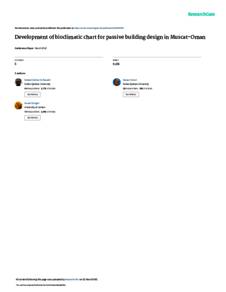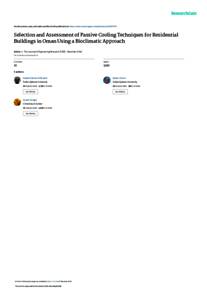وثيقة
Development of bioclimatic chart for passive building design in Muscat-Oman.
المعرف
DOI: 10.24084/repqj10.841
المساهمون
Zurigat, Y., مؤلف
Al-Rawahi, N., مؤلف
الناشر
European Association for the Development of Renewable Energy, Environment and Power Quality.
ميلادي
2012-03
اللغة
الأنجليزية
الملخص الإنجليزي
The selection of building passive thermal design strategies is based heavily on the local climatic conditions. Identifying the best strategy for a given location can be made using bioclimatic charts. Such charts depend on the location atmospheric pressure and are only available at sea level. Moreover, manual usage of these charts is cumbersome and time-consuming. In this paper, the development of a bioclimatic chart for Muscat is described in rigorous details based on Typical Meteorological Year (TMY) data. Muscat bioclimatic chart suggests a hot-humid climate type. December, January, and February are projected on the comfort zone with some slight under-heating where solar heating is sufficient for maintaining comfort. On the other hand, June, and July are the most hot, humid months in the year where mechanical dehumidification and cooling is a must for maintaining thermal comfort. Except for the period from December to February, the humidity tends to be from average to high (above 0.012 kg/kg Dry Air, DA). The chart also shows that high thermal mass can be effective during the months of March, April, October, and November. Due to the high humidity, evaporative cooling seems less efficient as a cooling strategy. A generic calculation tool that generates psychrometric chart for any altitude has been developed using MATLAB software.
المجموعة
ISSN
2172-038X
URL المصدر
قالب العنصر
مؤتمرات وورش عمل


